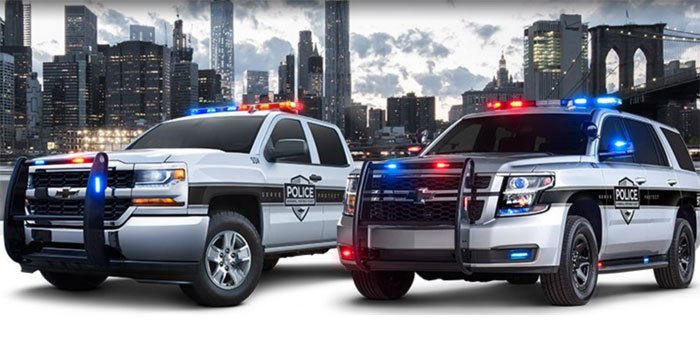This May, a police officer struck and killed James P. Kelley in St. Charles County, Missouri. In photos of the crash scene, you can see a broken "bull bar" falling from the deformed front end of the cruiser.
These accessories fixed to the front of cars, trucks, and SUVs are trendy with law enforcement. PoliceOne, which markets to cops and first responders, says bull bars are designed to "reduce the damage to patrol vehicles in the case of minor collisions." A video produced by Go Industries, which sells equipment to police departments, demonstrates how bull bars can push other vehicles off the road, either in a high-speed chase or to clear an immobilized car. Some rural police agencies use them to reduce the damage from animals they strike.
But bull bars, or "push bars," as they're sometimes called, can be deadly in a collision with a pedestrian or cyclist.
A review of studies on the safety effect of bull bars published in the journal Traffic Injury Prevention concluded that they "significantly alter the collision dynamics of vehicles, resulting in an increased risk of pedestrian injury and mortality in crashes."
A 1998 study in Australia -- where bull bars are much more common and seen as a way to reduce risk in collisions with kangaroos -- found they exerted 10 to 15 times more force on a child's head than an unmodified front end.
They can also put drivers and passengers in danger. Front ends are designed with "crumple zones" that absorb the impact of crashes to protect people inside the vehicle. Stiff metal bull bars inhibit that effect and concentrate force in a smaller area, with potentially deadly consequences.
Bull bars continue to be unregulated in the U.S., where, as Keith Bradsher documented in his book High and Mighty, they are mainly a fashion accessory to convey a sense of aggression. But other countries have taken action.
In 2010, the British government banned the sale of most models, citing safety concerns. An earlier study from the British Transport Research Laboratory (TRL) estimated that bull bars cost dozens of people their lives each year in the UK.
Meanwhile, American auto makers are marketing vehicles replete with bull bars to taxpayer-funded agencies whose ostensible mission is to keep people safe.
Our diverse lineup of police vehicles can help you meet the demands of your police fleet's tasks confidently. https://t.co/j5G6OnFQ4C
— GM Envolve (@GMEnvolve) December 15, 2017
Researchers have yet to produce comprehensive studies of crashes involving police vehicles with bull bars. But police officers are frequently involved in crashes. And if police vehicles are outfitted with bull bars, they are more likely to inflict severe injuries or kill people.
A quick Google News search turned up seven pedestrian fatalities involving police cruisers in May, June, and July. While it's seldom clear from the coverage whether the vehicles had bull bars, photographs from the scene often show police cruisers outfitted with them. The vehicle identified as the cruiser that struck James Kelley clearly had a bull bar.
In Sioux Falls, South Dakota, the local police department recently had to defend its use of bull bars after a resident complained about safety and police militarization. The Argus Leader reported that the department had spent $22,000 to put them on 45 police cars.
Barry Wellar, a retired University of Ottawa professor and expert witness on traffic collisions, told the paper they are dangerous. "They’re head high for a kid. They can take the bull bar right in the head," he said. "And they’re absolutely killer for cyclists or pedestrians. It’s serious trouble.”
But Police Captain Rich Miller told the City Council that the bars allow more sirens and lights to be mounted on the front of the car. He presented no evidence to suggest that the extra flash outweighs the public safety risk created by bull bars, and that was that -- the department didn't change a thing.





